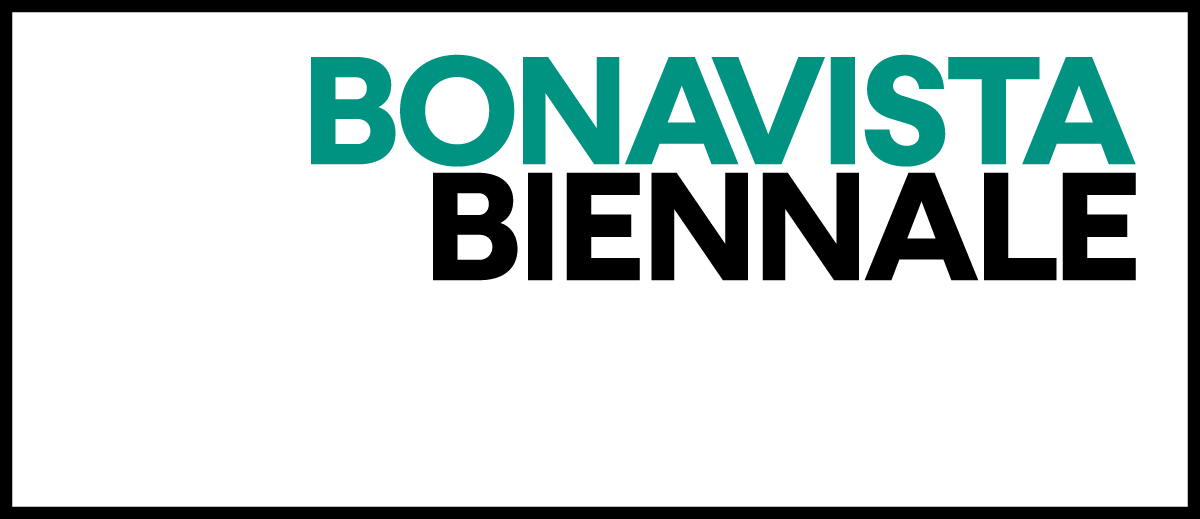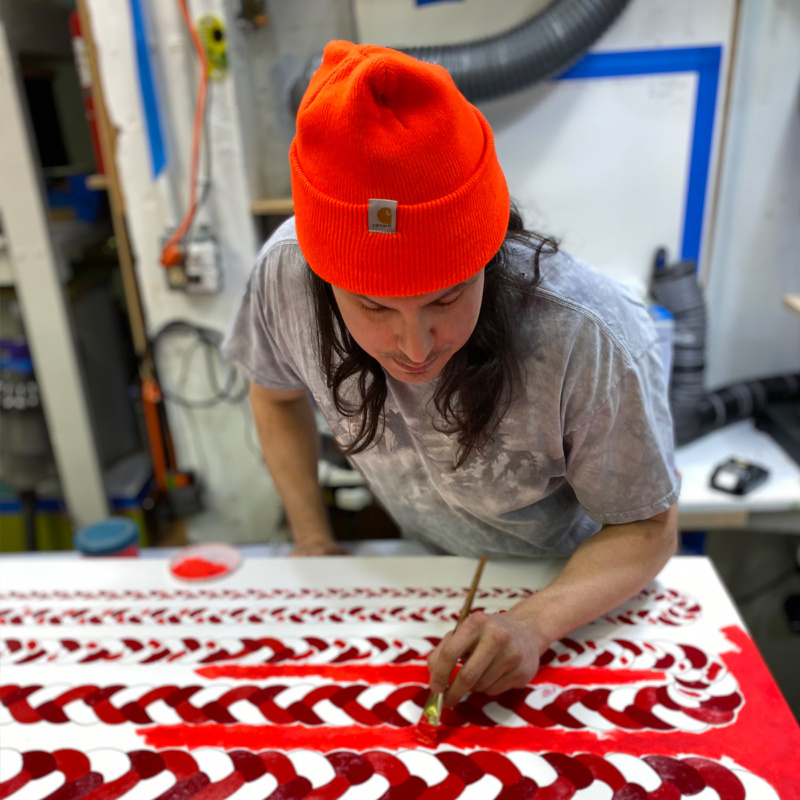Wally Dion
Wally Dion’s Grass Quilt was made as part of his 2022 residency at Wanuskewin in Saskatchewan. For the artist, this piece is a way of reflecting upon prairie tall grass and the reintroduction of bison into the Great Plains. For the Bonavista Biennale, Dion has created several more transparent quilt pieces, dedicated to the bison, winter and fire. The artist considers how all of these things have worked together for thousands of years to create what is known as the Prairie ecosystem, a vast and fertile expanse of land stretching from the foothills of Alberta to the banks of the Mississippi. Transported to the North Atlantic, the quilts acts as carriers of knowledge and stories, speaking to a wider notion of balance and interconnection in all climates and environments.
The quilt pieces also champion the contemporary and historical labour of makers who value the sustainable thriftiness of the home-made over industrial manufacture. For Dion, quilting is in tune with “nothing is wasted” values, a “means to re-use, re-purpose and retool old and worn out garments.” It is a practice shared by many cultures which has been creatively adapted by many First Nations. The art of quilting is prominent in many communities throughout Newfoundland and Labrador.
Dion’s installation embraces the inherent mobility of a quilt. It can move, comfort, and most importantly, embrace the body. It signifies layers of story and experience that requires activation and interaction. From Saskatchewan to New York to Newfoundland, Dion’s tactile quilts are fragile, yet adaptable to different ecosystems. As Dion explains, the quilt pieces welcome “air, moisture and aroma to pass through them. And like nets they gather tiny fragments of their host sites before relocating to other sites across Turtle Island.”
ABOUT THE ARTIST
Wally Dion is a visual artist living and working in Binghamton, New York. Born in Saskatoon, Saskatchewan, Dion is a member of Yellow Quill First Nation (Salteaux). He holds a BFA from the University of Saskatchewan and an MFA from Rhode Island School of Design. Throughout much of his career, Dion’s work has contributed to a broad conversation in the art world about identity and power, and can be interpreted as part of a much larger pan-American struggle by Indigenous peoples to be recognized—culturally, economically, and politically—by settler societies. Solo exhibitions of Dion’s work have been presented at the College Art Galleries, University of Saskatchewan; Wanuskewin Gallery, Saskatoon; MacKenzie Art Gallery, Regina; Urban Shaman Gallery, Winnipeg; Ottawa Art Gallery; and Boise Art Museum.

